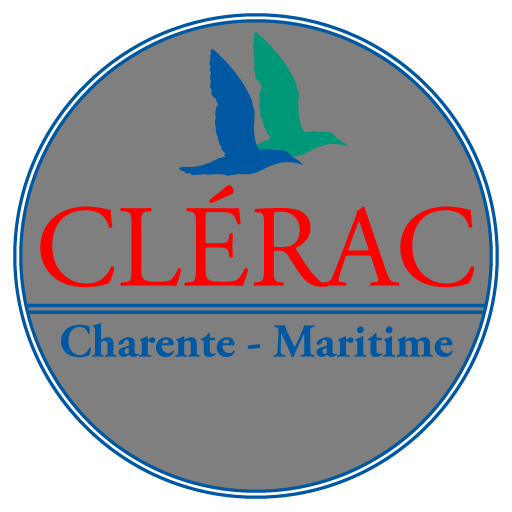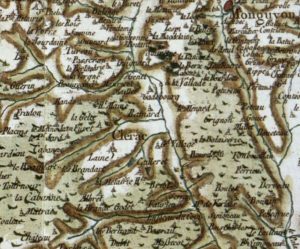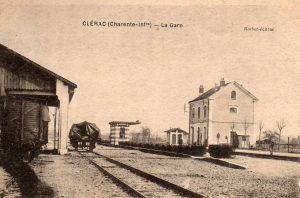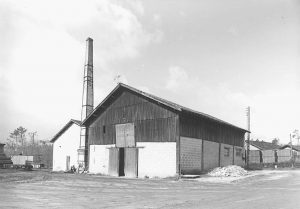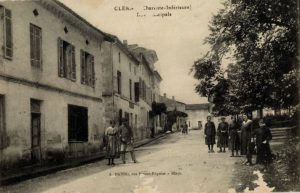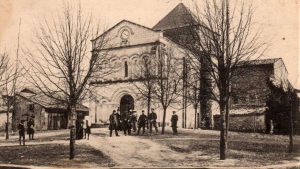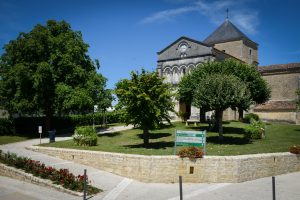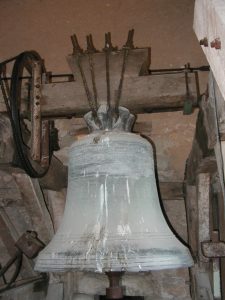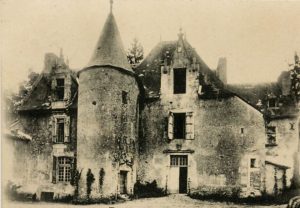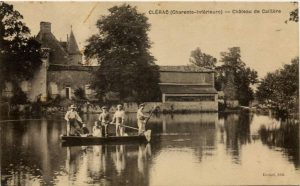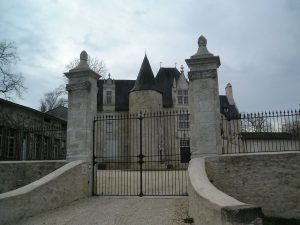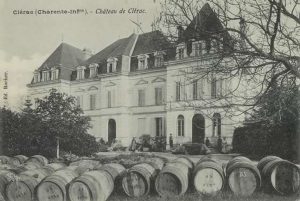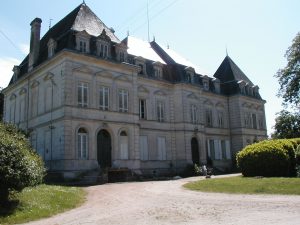History :
The indices of a human occupation around Clérac are ancient. A lot of prehistoric artefacts certify of this human presence such as flintstones, polished axes, parts of ceramic Neolithic …
Gallo-Roman remains were indicated in the east part of the territory. Indeed, Clérac was situated in the former province of Aquitania, near Roman important roads. The tradition evokes a first church built around the 5th century.
In the 11th century, Lord Adoïcus gave Saint-Vivien’s church and the near lands around to the abbey of Guîtres. This act marks the birth of the prieuré of Clérac. The church was probably reconstructed according to a model characterized by a vessel of three spans, ending in apse. The bordering lands were cultivated by monks.
During the Hundred Years War, part of the church and the prieuré were destroyed. The lands were ravaged and the inhabitants suffered from famine.
In 1462, Hardoin de Maillé and his wife Marguerite de La Rochefoucauld, lady of Montguyon gave to the knight Bertrand Ardilhon, in appreciation of her services, “hostels, domains and seigneury of Clérac”. Bertrand Ardilhon built then his current manor house, named the “castle of Caillères”. In 1492 and until the Revolution, the seigneury of Clérac passes by inheritance to the family Potter de Caillères, native of Angoumois.
It was still in the 15th century when vaults and head of the church Saint-Vivien were reconstructed, and the chapel was Saint Antoine added to the building.
The 16th and 17th centuries are characterized by new confusions in particular bound to the religious Wars. Many inhabitants adopted the reformed religion and several confrontations took place near: fight of Montguyon hanging the “Fronde” in 1652, then revolt of the farmers of the seigneury of Montguyon against the fiscal conductor in 1661.
In the 18th century, a big part of the parish’s territory was swampy, covered with moors and copses, the western half was dedicated to the sheeps and the ewes; East, the banks of Lary were cultivated with cereal. Until the middle of the century, travelers going from Paris to Bordeaux went throw Clérac. About 900 cléracais lived there modestly, mortality was very high, resulting from the weakness of the farming technics, but also from bad harvests bound to the bad weather, and from the epidemics consecutive to a great insalubrity. The Revolution had few consequences, the Lord of Clérac, Louis de Caillères was incorporated in the republican army, then became mayor of Clérac. Raphaël de Caillères, Lord of the Valade became commander of the National police of Clérac. Only the priest François de la Faye d’ Ambérac, has left Clérac.
From the 19th century on, the municipality prospered. To clean up the west part of the town, pines were planted, in order to produce some resin. In the second half of the century, one of the main resources of Clérac consisted in the production of brandy. The sheep farming was replaced by cows and pigs. One should not forget to mention the massive exploitation of the “white clay” for potteries, glass factory of Gélie, earthenware factory of the family Trijaud then for the manufacturing of terra-cotta pipes by an Alsatian having run away the war of 1870. This last one became the main activity in the Interwar period, employing several hundreds of workers on careers and factories situated near Clérac’s station. Clérac took advantage of the improvement of the ways of transport.
The roads network extends with the road Chevanceaux-Libourne; the road of Orignolles to Valin which crosses Clérac from north to south along Lary and road Montendre-Guîtres in the South. As consequences of this economic prosperity, the municipality counts henceforth more than 1500 inhabitants in 1861, among which former inhabitants of the Landes who came to learn technics concerning pine trees, bretons learning breeding and Italian, employed as farmers or craftsmen. The opening of the railroad Surgères-Saint-Mariens in 1903 allowed to export brandy towards Cognac, as well as resin, wood and clay towards the port of Bordeaux. The village was transformed, the city hall and the school complex were built in 1886, the church was restored and enlarged with the chapel of the Virgin. Some prosperous families built beautiful houses as the castle of Espie, or the house Geneuil. It is only since 1960-1970, after the economic slowdown, that the population started to decrease.
Carte de cassini, gare, distillerie, rue du jeu de quilles
Rich industrial heritage of the 19th end until 20th centuries:
- Berteau’s lime factory, brickyard, tilery
- Distillery of Mr Nau
- Distillery of Mr Poupelain
- Factory of preparation of product mineral, clays and minerals
